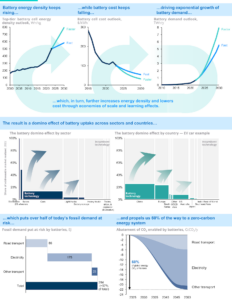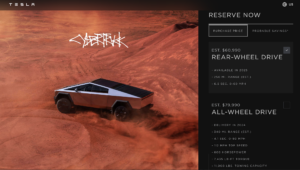In the ideal world, EV drivers would never handle a charging cable. Instead of plugging into a wall charger or charging bollard, they would simply park their cars over a wireless charging hub and walk away. When they return, their cars would be fully charged and ready to continue on down the road.
That’s the dream, but it’s not a fantasy. Oak Ridge National Laboratory, located near Knoxville, Tennessee, is a part of the US Department of Energy. Among its many missions, it is working on improving wireless charging technology, and has recently licensed its latest system to HEVO of Brooklyn, NY, which will focus on making it commercially feasible.
“Highly efficient wireless charging is a breakthrough technology that can alleviate EV range anxiety and facilitate the U.S. effort to decarbonize the transportation sector,” says Xin Sun, associate laboratory director for energy science and technology at ORNL. “We are excited to see…..one of our technologies move into the private sector where it can create new green jobs and support the nation’s clean energy goals.”
The license covers ORNL’s unique polyphase electromagnetic coil that delivers the highest surface power density available — 1.5 megawatts (1,500 kilowatts) per square meter. That is up to 10 times higher than wireless technology that is currently available. This surface power density supports higher power levels in a thinner, lighter coil, resolving the issue of adding range-sapping weight to electric vehicles.
The license also includes ORNL’s Oak Ridge Converter, which eliminates one of the power conversion stages needed for wireless power transfer, resulting in more compact and less costly stationary infrastructure.
Partnership With Volkswagen
ORNL has just announced that it is partnering with Volkswagen’s Innovation Hub in Knoxville and the University of Tennessee to perfect wireless charging for production cars. Where once wireless systems were limited to 6.6 kW of charging power, the systems ORNL is working on today are capable of 120 kW of power and the goal is to get to 300 kW, which would be enough to recharge a Porsche Taycan to an 80% SOC in about 10 minutes.
 100vw, 700px”></a></p>
<p id=) Compact polyphase electromagnetic coils developed by ORNL. Image credit: Carlos Jones/ORNL, U.S. Dept. of Energy.
Compact polyphase electromagnetic coils developed by ORNL. Image credit: Carlos Jones/ORNL, U.S. Dept. of Energy.
“We are excited to work with Volkswagen to demonstrate ORNL’s high-powered, ultra-efficient wireless charging technology,” says Xin Sun. “Our unique polyphase electromagnetic coil design and power electronics provide high power transfer levels in a compact system, with the potential to alleviate electric vehicle range anxiety and speed the decarbonization of the U.S. transportation sector.” The wireless charging project is supported by the DOE Office of Energy Efficiency & Renewable Energy’s Vehicle Technologies Office.
According to Inside EVs, the latest technology is 98% efficient, meaning only about 2% of the electricity provided to the charging hub is lost between the external charging hub and the receiver mounted to the underside of the car.
Wireless charging will be a boon to the EV revolution, and self-driving technologies will help position cars accurately so the wireless charging hubs can operate at maximum efficiency. Drive in. Park. Go shopping and leave with a replenished battery. That’s something no fossil fuel-powered cars will ever be able to do.
Appreciate CleanTechnica’s originality? Consider becoming a CleanTechnica Member, Supporter, Technician, or Ambassador — or a patron on Patreon.

- "
- &
- Advertise
- among
- announced
- Anxiety
- battery
- car
- cars
- charged
- charging
- clean energy
- cleantech
- Cleantech Talk
- continue
- Conversion
- credit
- Department of Energy
- Design
- Director
- DOE
- efficiency
- Electric
- electric vehicle
- electric vehicles
- electricity
- Electronics
- energy
- energy efficiency
- EV
- FANTASY
- Focus
- Goals
- Green
- Guest
- High
- HTTPS
- image
- Infrastructure
- Innovation
- IT
- Jobs
- latest
- License
- Limited
- Making
- move
- Near
- NY
- oak
- Patreon
- podcast
- Porsche
- power
- private
- Production
- project
- range
- Recharge
- Science
- Science and Technology
- self-driving
- Shopping
- So
- speed
- square
- support
- Supported
- Supports
- Surface
- system
- Systems
- Technologies
- Technology
- transportation
- u.s.
- university
- us
- vehicle
- Vehicles
- volkswagen
- vw
- wireless
- Work
- world






